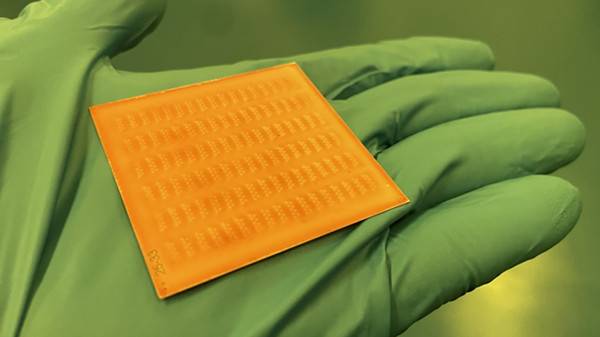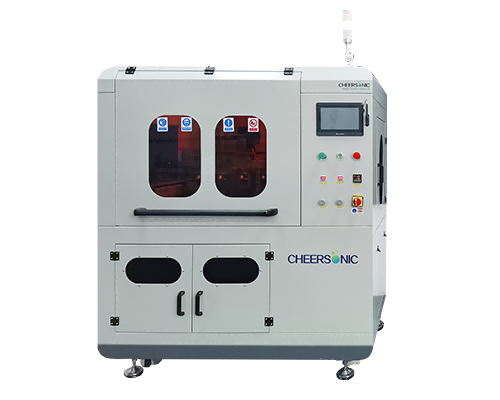Modification and Application of Polyimide
Modification and Application of Polyimide – Polyimide Coating – Cheersonic
Polyimide modification methods include reinforcement, filling, and alloy blending. Glass fiber, boron fiber, carbon fiber, and metal whiskers can be added to strengthen the polyimide, the purpose is to reduce the linear expansion coefficient of polyimide and improve the strength, reduce costs, and use it to manufacture high-strength structural parts. Filling with inorganic fillers, graphite, molybdenum disulfide or polytetrafluoroethylene as fillers can improve its self-lubricating effect and reduce costs. It can be used to manufacture piston rings, valve seals, bearing seals and other parts. Polyimide can be blended and modified with epoxy resin, polyurethane, polytetrafluoroethylene and polyetheretherketone to form a blended alloy.
Ether anhydride polyimide can be used to manufacture compressor blades, piston rings, sealing gaskets, bearings, valve seats, bearings, bearing retainers, bushings, gears, brake pads and other parts. Thermoplastic polyimide is mainly used in the field of electronics and electrical to manufacture high-temperature sockets, connectors, printed circuit boards and computer hard disks, integrated circuit chip carriers and other parts.
In the electrical and electronic industry, parts made of polyetherimide (PEI) materials have been widely used, including high-strength and dimensionally stable connectors, ordinary and miniature relay housings, circuit boards, coils, reflectors, and high-precision optical fiber components. It is particularly noteworthy that using it to replace metal to make optical fiber connectors can optimize the component structure, simplify its manufacturing and assembly steps, and maintain more accurate dimensions, thereby ensuring that the cost of the final product is reduced by about 40%.
Impact-resistant polyetherimide sheets are used to manufacture various aircraft parts, such as portholes, nose parts, seat backs, inner wall panels, door coverings, and various items for passengers. Composite materials composed of PEI and carbon fiber have been used in the structure of various components of the latest helicopters.
Taking advantage of its excellent mechanical properties, heat resistance and chemical resistance, PEI is used in the automotive field, such as high-temperature connectors, high-power headlights and indicator lights, sensors for controlling the external temperature of the car (air conditioning temperature sensors) and sensors for controlling the temperature of the air and fuel mixture (effective combustion temperature sensors).
In addition, PEI can also be used as vacuum pump impellers resistant to high-temperature lubricating oil corrosion, ground glass joints (sockets) of distiller operating at 180°C, and reflectors of non-lighting anti-fog lamps. PEI has excellent hydrolysis resistance, so it can be used as handles, trays, fixtures, prostheses, medical lamp reflectors and dental appliances for medical surgical instruments. PEI has excellent high-temperature mechanical properties and wear resistance, so it can be used to manufacture valve parts for water pipe diverter valves.
Ultrasonic spraying systems have been proven to be used in various applications that require uniform and repeatable photoresist or polyimide film coatings. The thickness control range is from submicron to more than 100 microns, and any shape or size can be coated.
Ultrasonic spraying technology is used for semiconductor photoresist coating. Compared with traditional coating processes such as spin coating and dip coating, it has the advantages of high uniformity, good encapsulation of microstructures, and controllable coating area. In the past 10 years, it has been fully demonstrated that the 3D microstructure surface photoresist coating using ultrasonic spraying technology, the prepared photoresist coating is significantly higher than the traditional spin coating in terms of microstructure wrapping and uniformity Craft.
The ultrasonic spraying system can precisely control the flow rate, coating speed and deposition volume. Low-speed spray shaping defines atomized spray as a precise and controllable pattern to avoid excessive spray when producing a very thin and uniform layer. The ultrasonic spray system can control the thickness from sub-micron to more than 100 microns, and can coat any shape or size.
About Cheersonic
Cheersonic is the leading developer and manufacturer of ultrasonic coating systems for applying precise, thin film coatings to protect, strengthen or smooth surfaces on parts and components for the microelectronics/electronics, alternative energy, medical and industrial markets, including specialized glass applications in construction and automotive.
Our coating solutions are environmentally-friendly, efficient and highly reliable, and enable dramatic reductions in overspray, savings in raw material, water and energy usage and provide improved process repeatability, transfer efficiency, high uniformity and reduced emissions.
Chinese Website: Cheersonic Provides Professional Coating Solutions



